

James Wong
2 Months Ago
Toyota's new-gen seven-seat crossover is an entirely different beast underneath, with its new hybrid drivetrain the lead act.
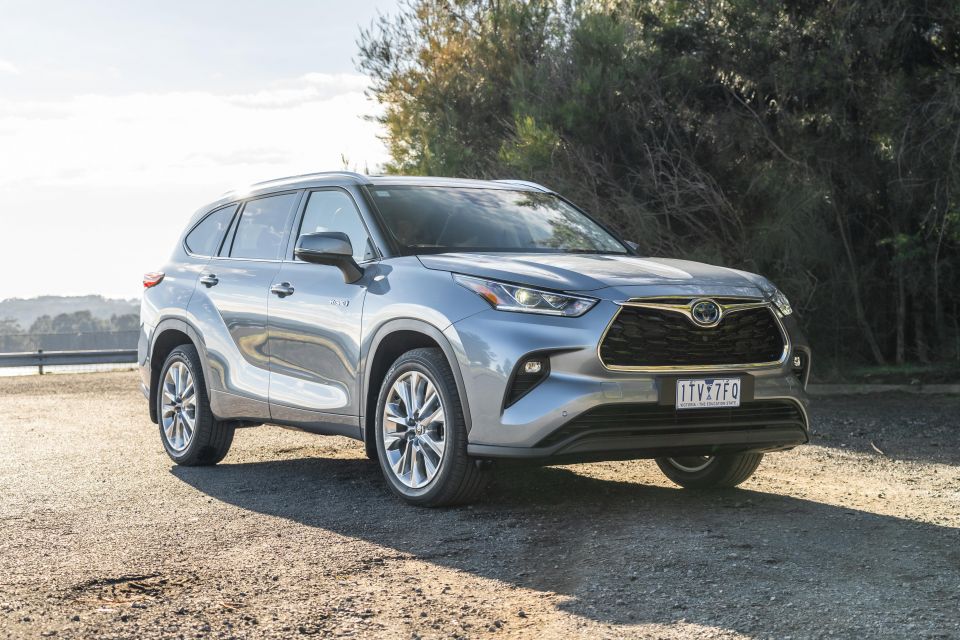
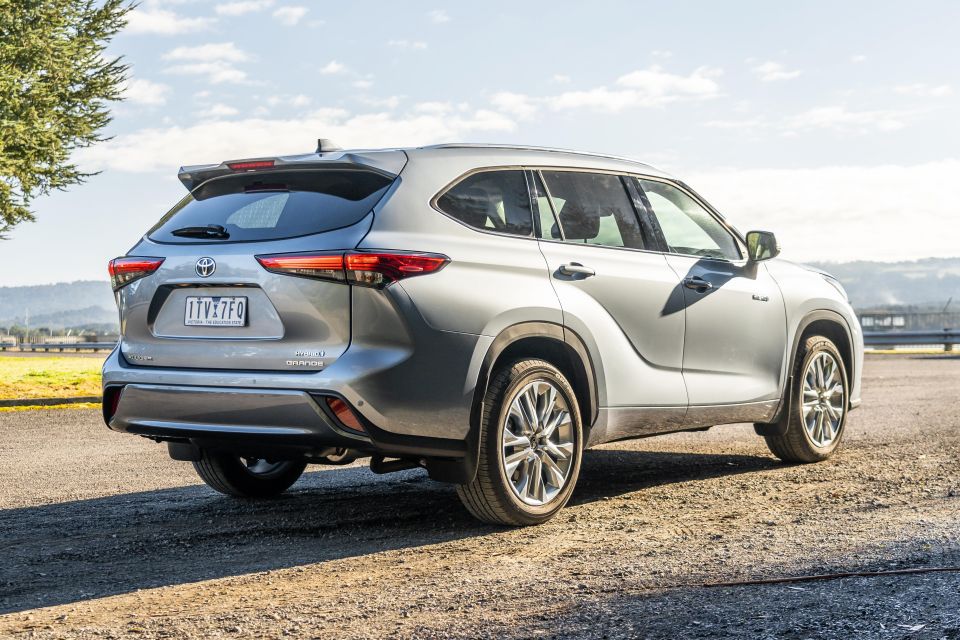

Senior Contributor
New from
$44,850
excl. on-roads

Senior Contributor
New from
$44,850
excl. on-roads


Senior Contributor
New from
$44,850
excl. on-roads

Senior Contributor
New from
$44,850
excl. on-roads
Quickly see how this car stacks up against its competition. Select any benchmark to see more details.
CarExpert helps new car buyers save thousands with expert reviews, honest advice, and transparent pricing – no dealer pressure and no sales games.
The Toyota Kluger has been Australia’s top-selling large family SUV for years, a household name. So the arrival of a new one is significant.
Launched in June 2021, the fourth-generation model is a total overhaul, based on the same modular ‘TNGA’ platform as the RAV4 and Camry.
As we noted at the launch, the new Kluger now feels like a proper big brother to the RAV4, offering seven seats. It also comes with a model-first hybrid option –given how good the RAV4 Hybrid is, we have high hopes.
Core unibody competitors to the Kluger include the well-regarded Mazda CX-9, Hyundai Santa Fe and Palisade, and Kia Sorento.
Here we take a look at the flagship variant in the new-look line-up, the Kluger Grande.
Prospective buyers must first choose between three levels of specification: the base Kluger GX, mid-level Kluger GXL, and top-of-the-range Kluger Grande.
Then they have to choose between an updated 3.5-litre petrol V6 engine with front- or all-wheel drive, or spend a further $2500 for the hybrid option.
2021 Toyota Kluger pricing before on-road costs:

So our test car wears a manufacturer recommended price of $75,400 before on-road costs, which is equal to about $82,900 drive-away once you’ve paid stamp duty, registration, compulsory third-party insurance and dealer delivery.
That seems steep. In Victoria a Mazda CX-9 Azami costs $73,490 drive-away, a diesel Hyundai Santa Fe Highlander $70,500 drive-away, and a diesel Kia Sorento GT-Line $67,290 drive-away.
The Kluger does line up well next to the Hyundai Palisade Highlander diesel, though, which costs $75,000 plus on-roads or about $82,000 drive-away.
It’s worth pointing out that the de-specified Toyota Kluger GXL Hybrid AWD has a $12,000 lower list price than the Grande, too.
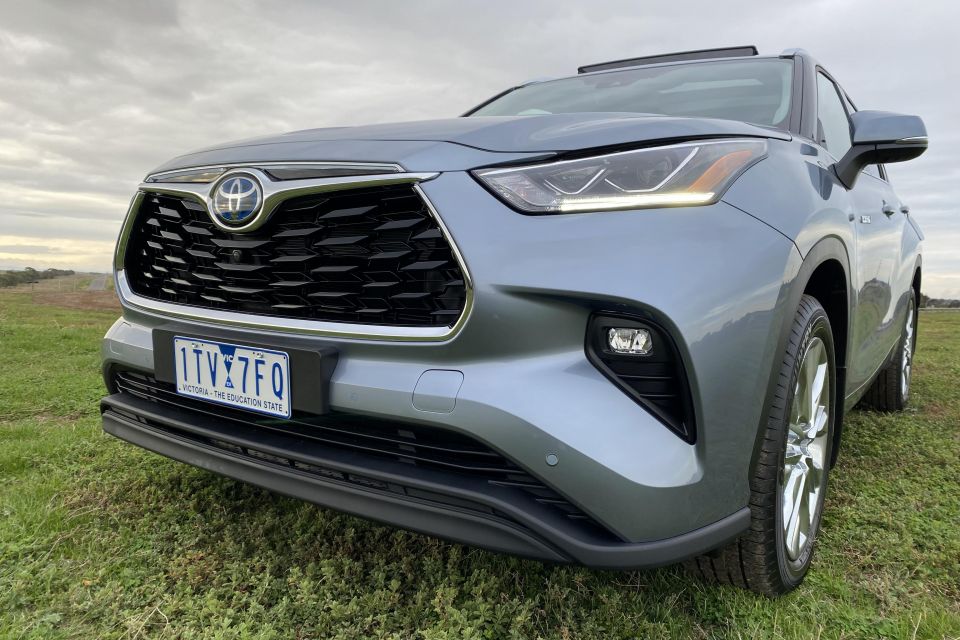
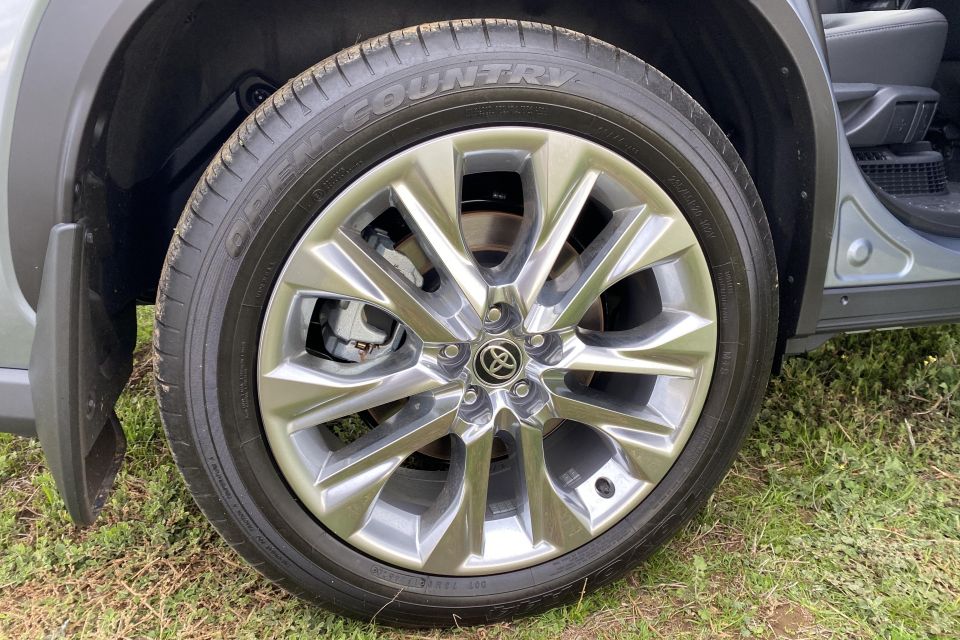
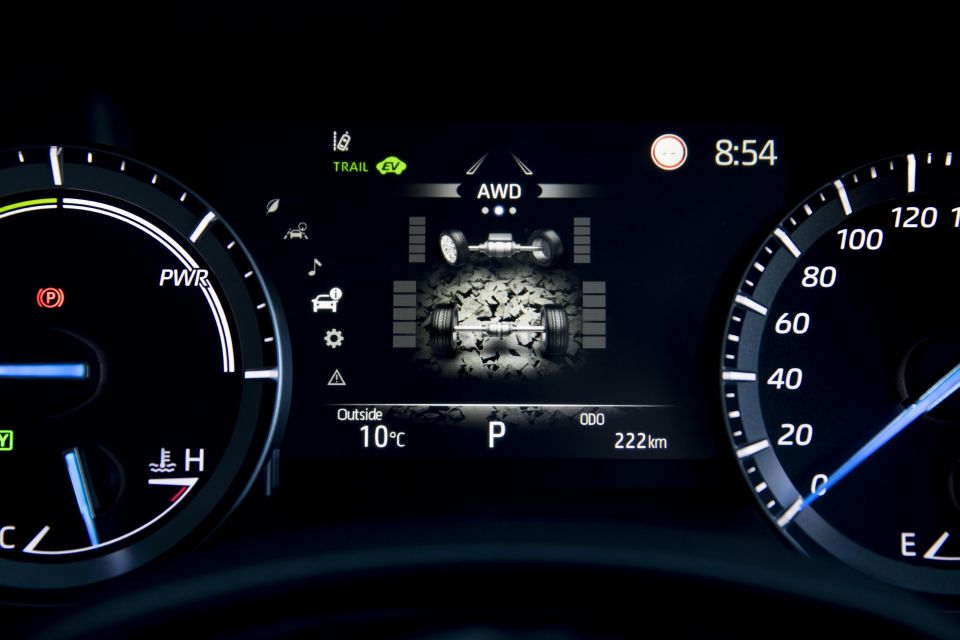

Our test car comes fully loaded, with 20-inch ‘Chromtec’ wheels, projector LED headlights (not matrix unfortunately), heated power side mirrors, roof rails, privacy glass, a power tailgate with kick sensor, a panoramic sunroof, front and rear parking sensors, and a chrome grille.
Premium paint costs $675 extra, and there are eight colour choices.
Inside you get powered, heated and ventilated front seats with driver memory trimmed in ‘premium’ quilted leather; ambient interior lighting, a driver’s head-up display, rear sun shades, three-zone climate control, and a proximity key.
The centre touchscreen is an 8.0-inch unit, and it features digital radio, wired Apple CarPlay/Android Auto, satellite-navigation, and a 360-degree camera. There’s also an uprated 11-speaker JBL sound system.
For details on other Kluger variants read our 2021 Toyota Kluger price and specs story.
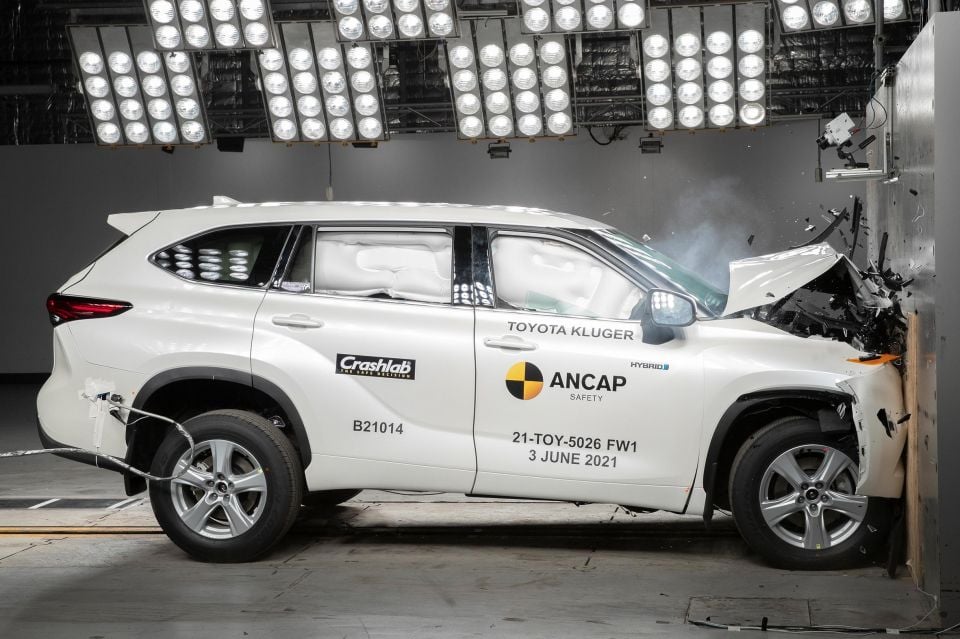
The new Kluger achieved the maximum five-star ANCAP crash rating a few weeks ago, with a 2021 date stamp.
The scores were 90 per cent for adult protection, 88 per cent for child protection, 76 per cent for vulnerable road-user protection, and 82 per cent for its safety assist technologies.
Dual frontal, side head-protecting airbags (first, second and third rows), side chest-protecting airbags (first row), and a driver’s knee airbag are standard.
But a centre airbag to minimise occupant injury after a far-side impact is not available.
Active safety features include pre-collision autonomous emergency braking (AEB) with pedestrian and daytime cyclist detection, lane-departure alert with steering and lane-centring assist, adaptive cruise control, junction AEB, and road sign assist.
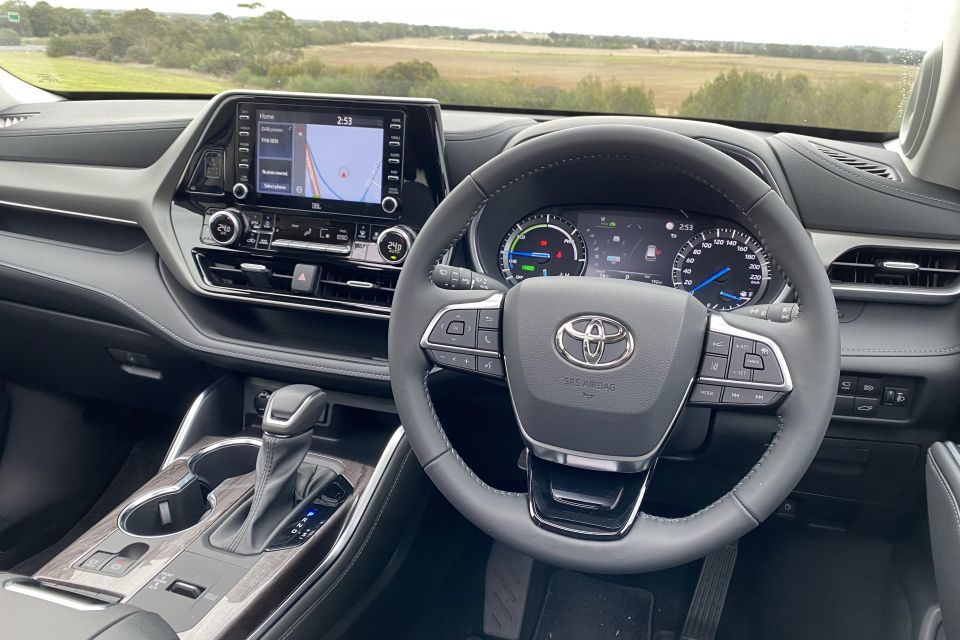
The interior is clearly a step forward on the previous model in terms of material quality and trims, though it doesn’t feel particularly more or less practical than the highly useful old model.
It has a nice steering wheel with damped buttons, a hybrid-specific instrument cluster with a sharp TFT display in the centre, and a big projecting head-up display that shows your speed and puts directional signals on the windscreen.
The seats are squishy, nicely trimmed and comfy; and front occupants have heating and ventilation, electric movement, and (on the driver’s side) memory presets.
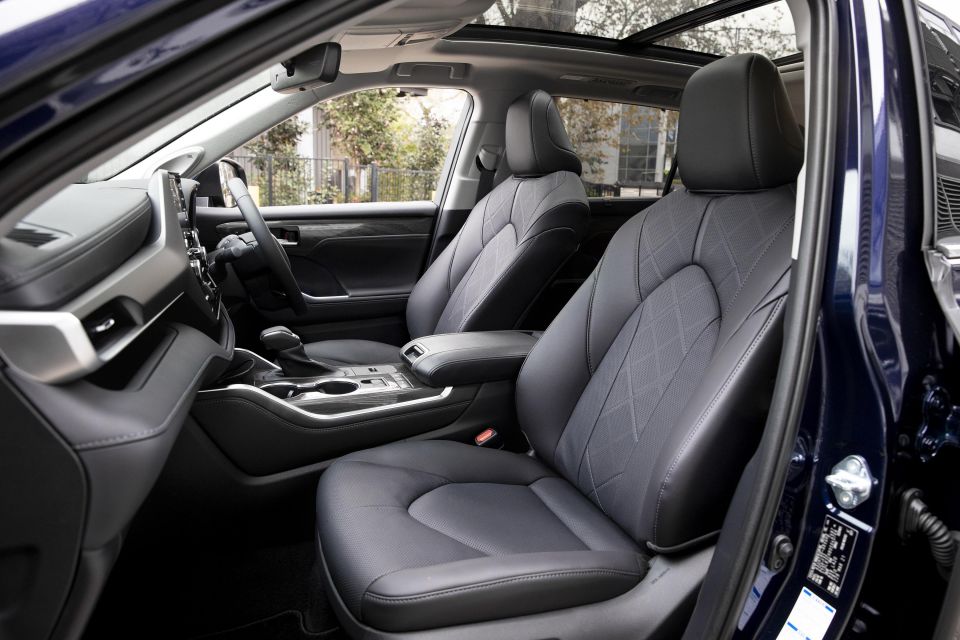

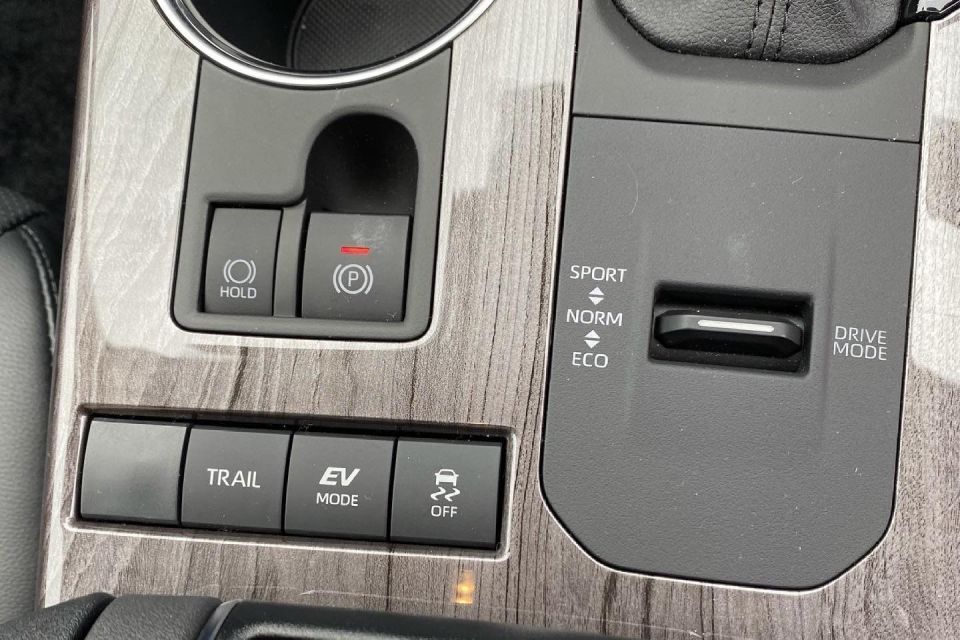
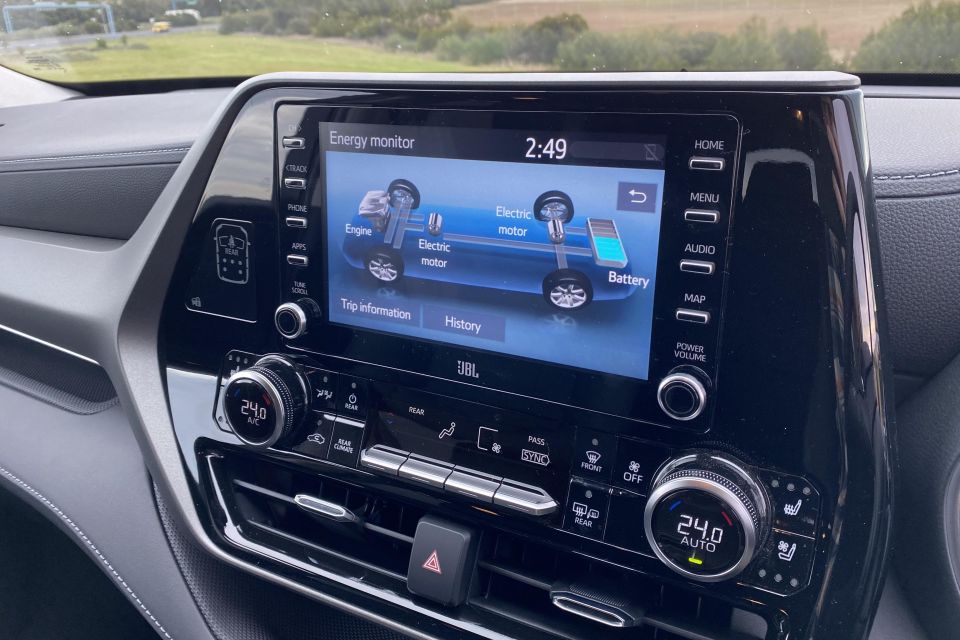
Most contact points are trimmed in rubbery stitched materials and it all feels well-made with a few minor exceptions such as the tacky instrument binnacle, but I’m not a huge fan of the glossy wood-look door inlays and the copious piano black trim used on the fascia – which becomes a magnet for dust, scratches, smudges, and sun reflections.
There’s so much useful storage, from the vast centre console with sliding cover section that’ll swallow a standing 1.5-litre bottle, big centre cup-holders, moderate door bins, a pull-out cubby near the driver’s knee, and various open sections running horizontally across the lower dash, trimmed in grippy material.
One of the letdowns is infotainment. Left-hook US-market versions come with a vast 12.0-inch centre display reminiscent of the latest Lexus products, whereas Toyota Australia fits an 8.0-inch touch display with button shortcuts even in this top-of-the-range Grande variant.

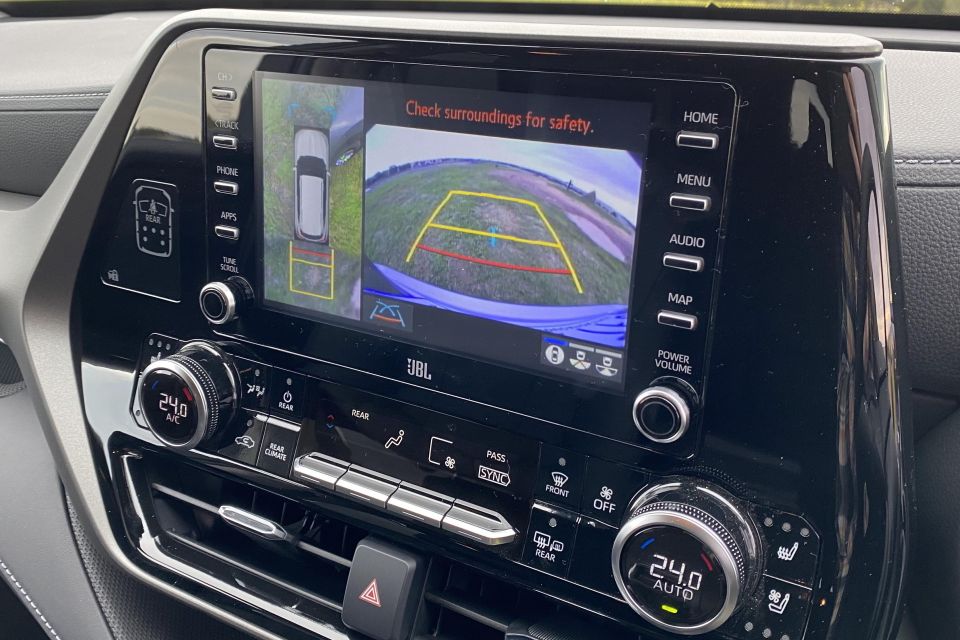
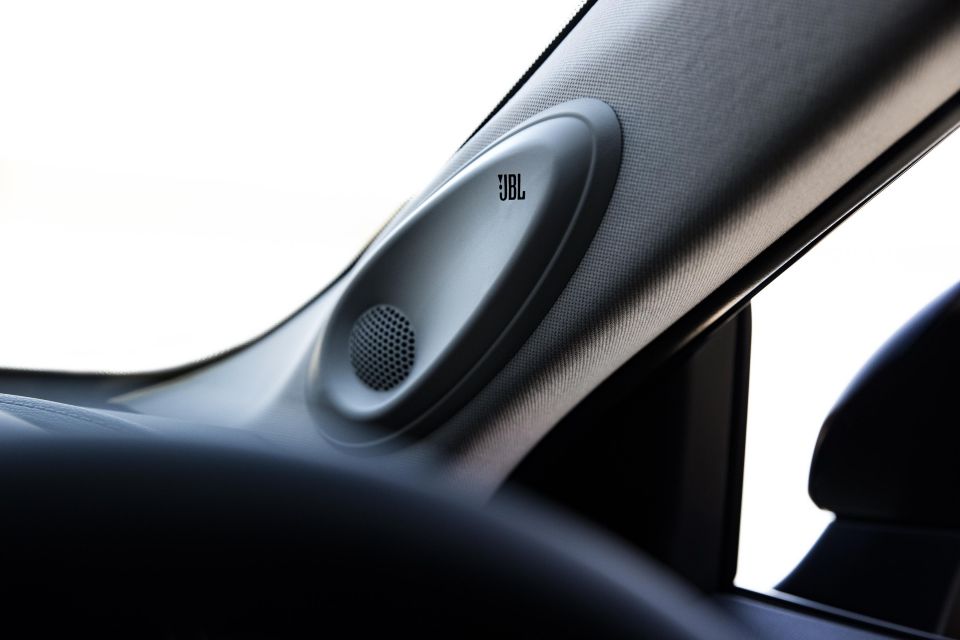
It looks dated next to the latest Hyundai and Kia systems, and processes data slower. Considering this new Kluger sits on an entirely new architecture, it feels like our right-hand drive market was relegated to also-ran status as far as infotainment is concerned.
In fairness the maps work sufficiently, there’s wired Apple CarPlay and Android Auto, a digital radio receiver, and an overhead-view camera with moving guidelines that isn’t the highest-resolution but is still nice to have. The 11-speaker JBL sound system is an upgrade on cheaper Kluger variants. Up front you get three USB-A inputs and two 12V ports, but no wireless charging pad.
In row one you have two zones of climate control operated by buttons and dials, and the ambience is further amplified by the large panoramic glass sunroof.
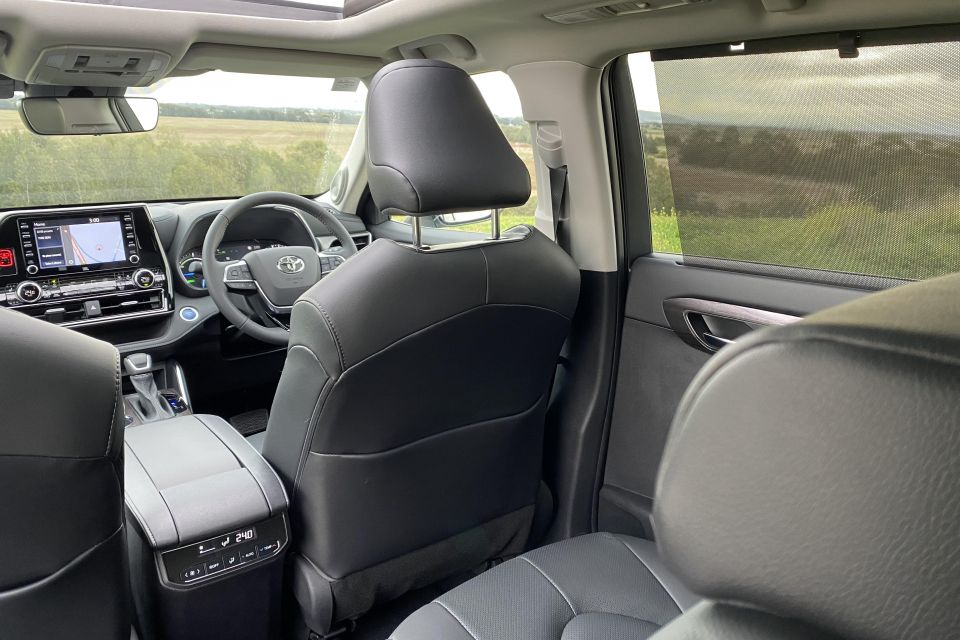
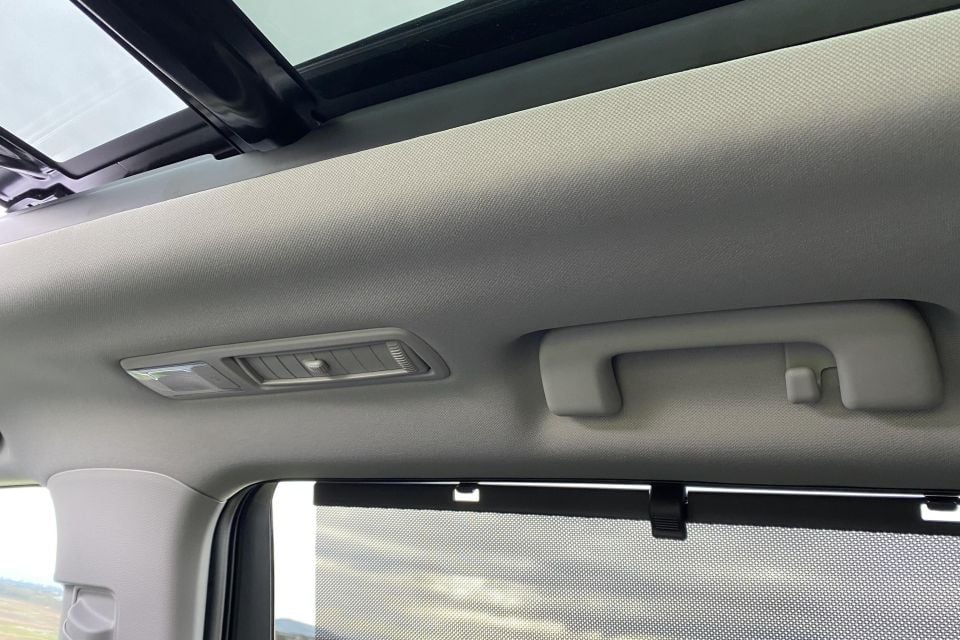
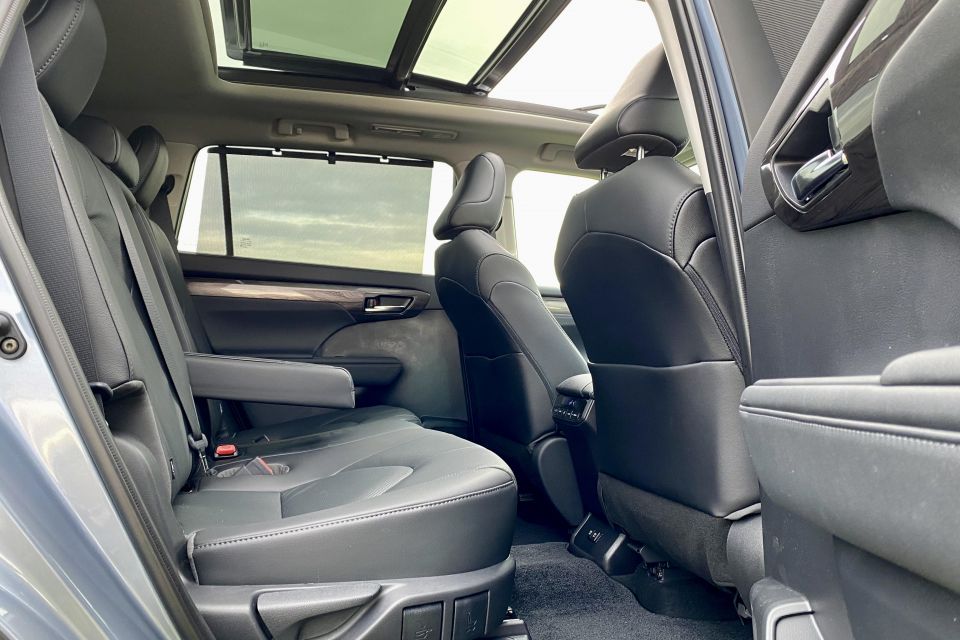
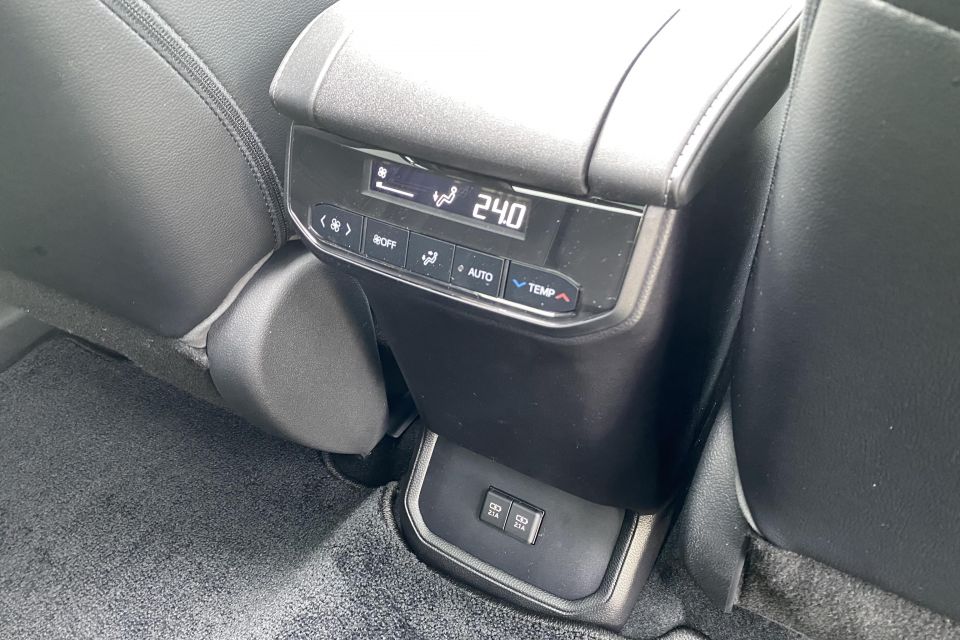
Check out the embedded video review above to see more on how the interior looks and feels.
To the second row. There’s a ton of kneeroom and headroom for anyone up to 200cm (I’m 194cm and was fine) in each outboard seat, and the nearly flat floor bereft of a driveshaft makes the centre seat quite usable too. However I’d like the doors to open in a full 90-degree arc like a Honda CR-V.
Occupants can tilt and slide (60:40) their seats, have their own temperature control unit fitted behind the centre console alongside a pair of USB-A points, vents in the roof next to damped grab handles, and nifty pull-up sun blinds on each side window. There are also map pockets and a pull-down centre armrest with cup holders.
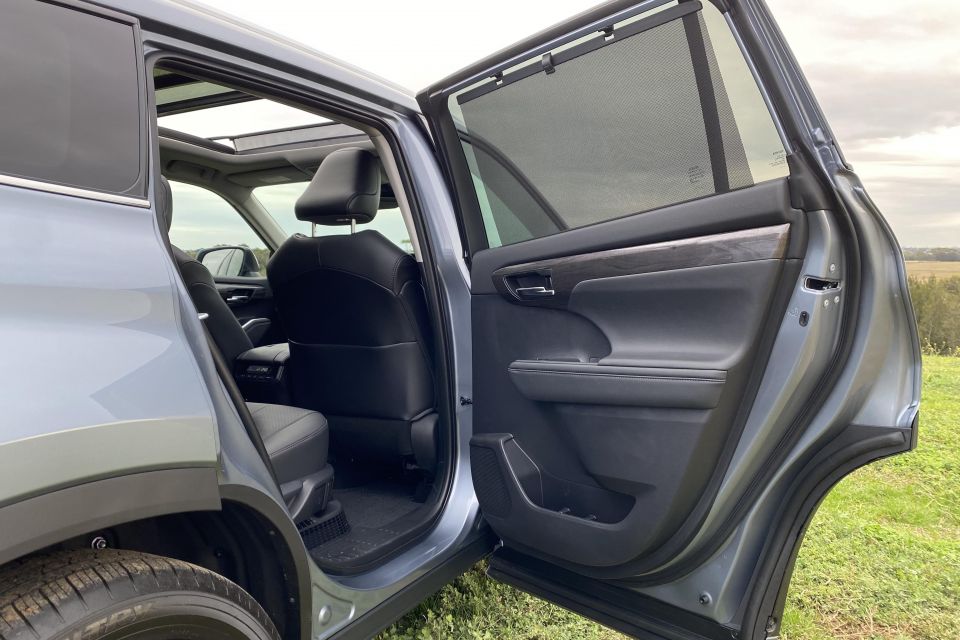
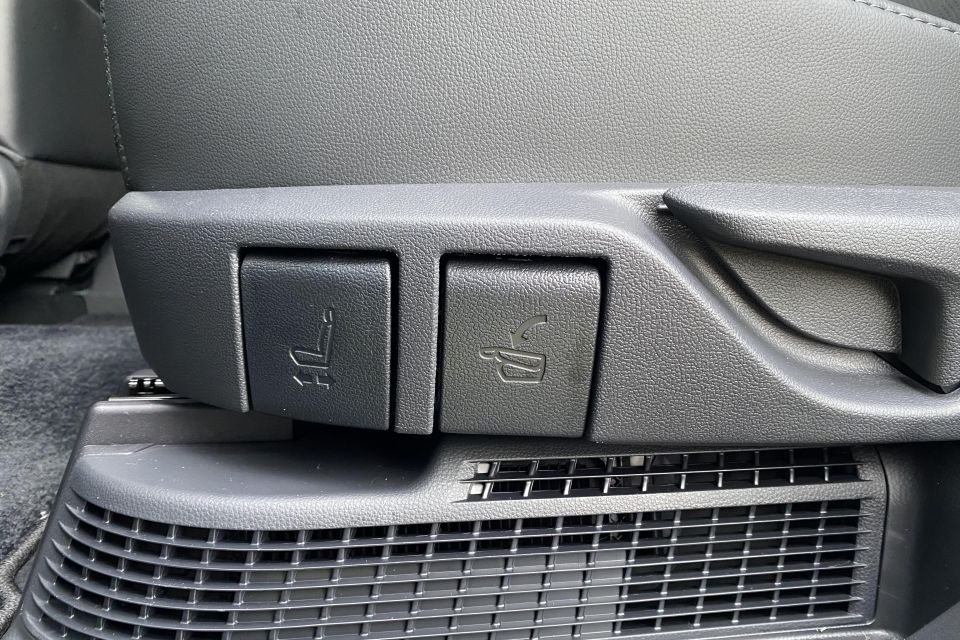
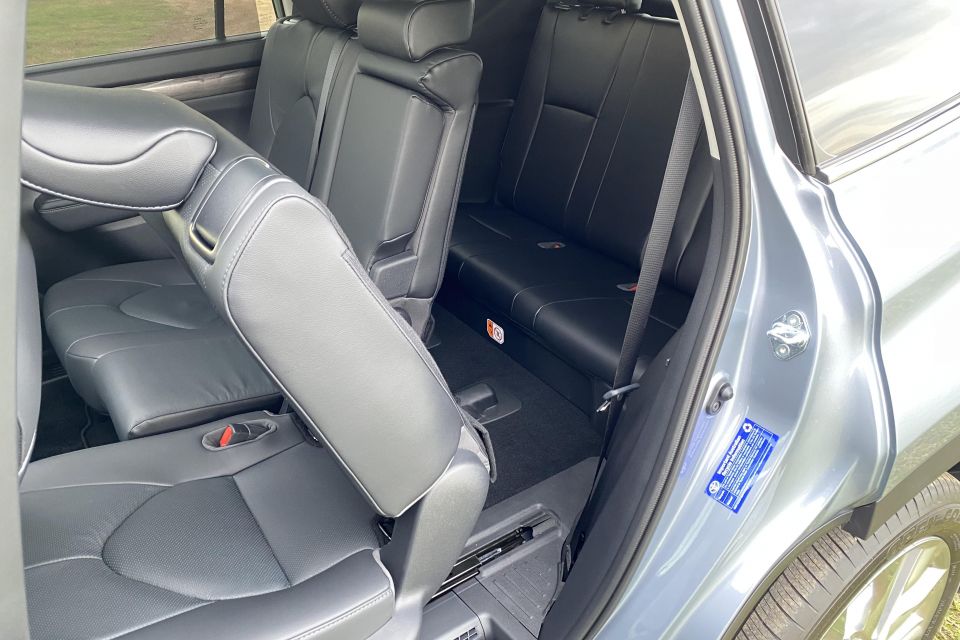
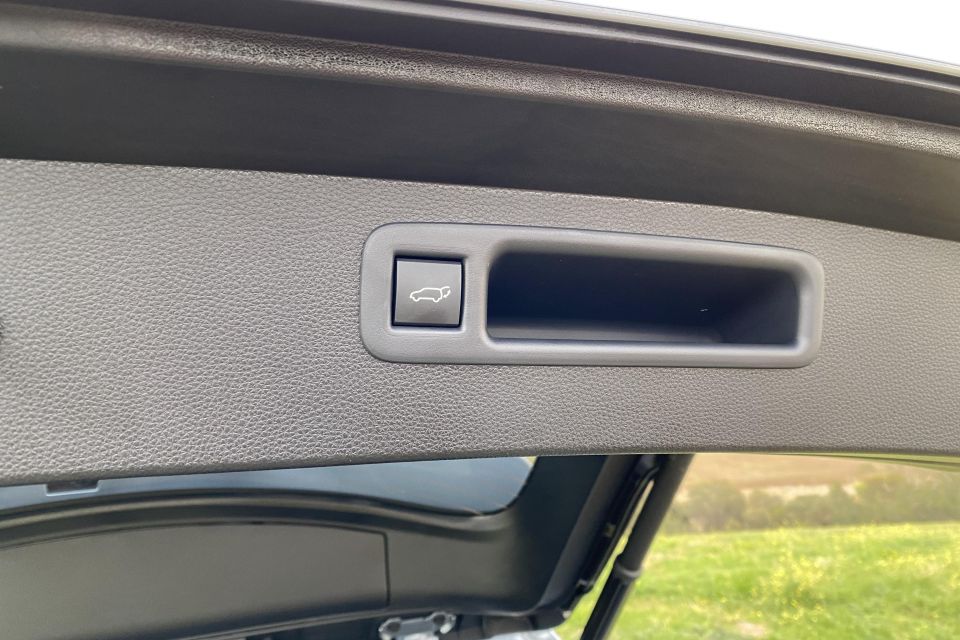
There are three top tether points and ISOFIX child-seat attachment points on the outboard seats in the middle row.
The safest way to access the third row of seats is to whip around to the passenger side, and pull a lever on the split bench that both tilts the (40-per cent portion) backrest and slides the base in one smooth motion.
The back seats fold flush into the floor when not in use and are easily deployed in two motions – one for the seatback and the other for the flip-up headrests. Still, they’re best saved for kids.
Compared to a proper people-mover like the Kia Carnival, or Hyundai’s boxier Palisade, access is tight and space for adults limited.
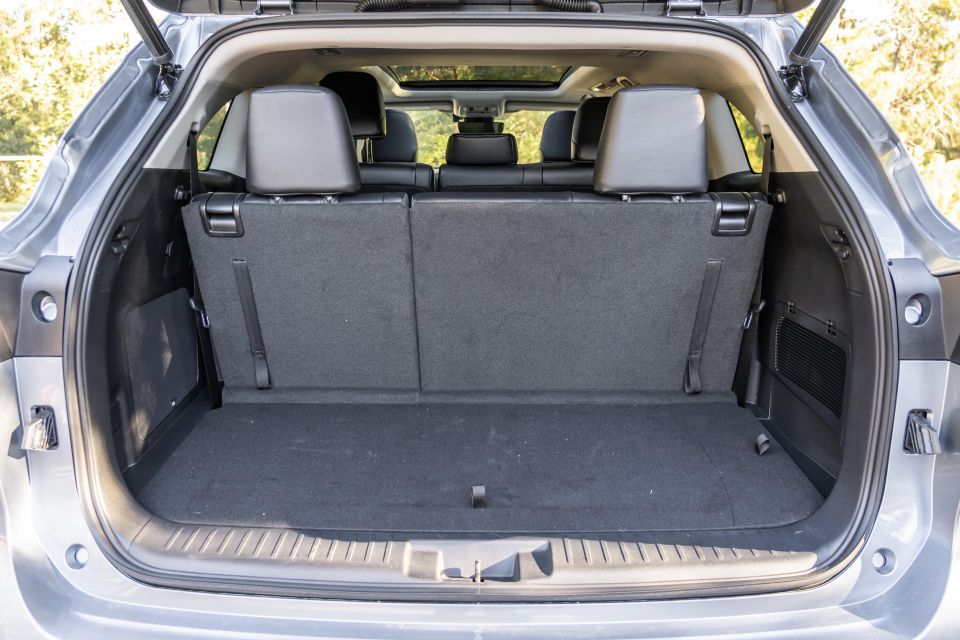
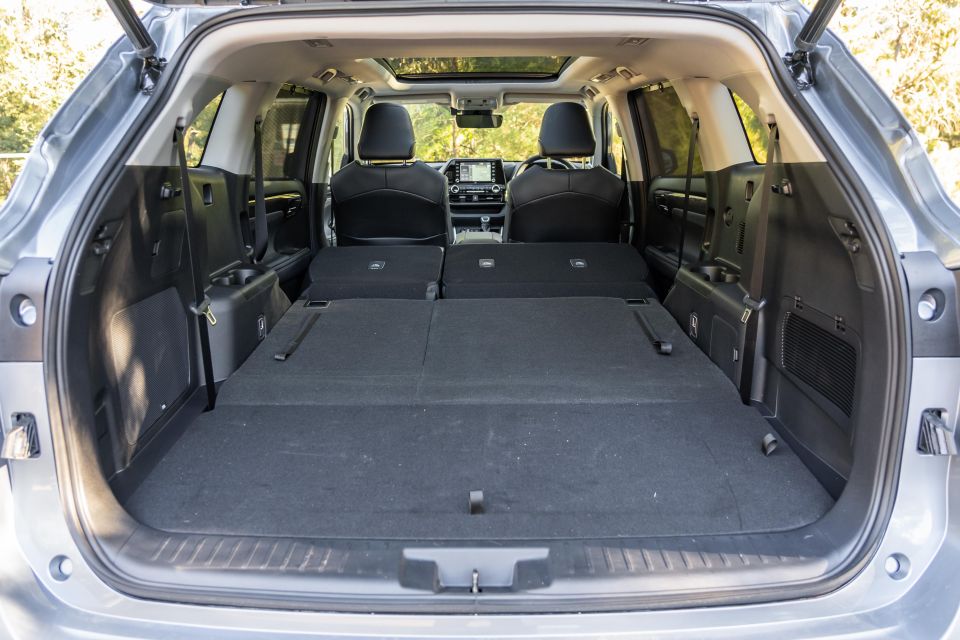
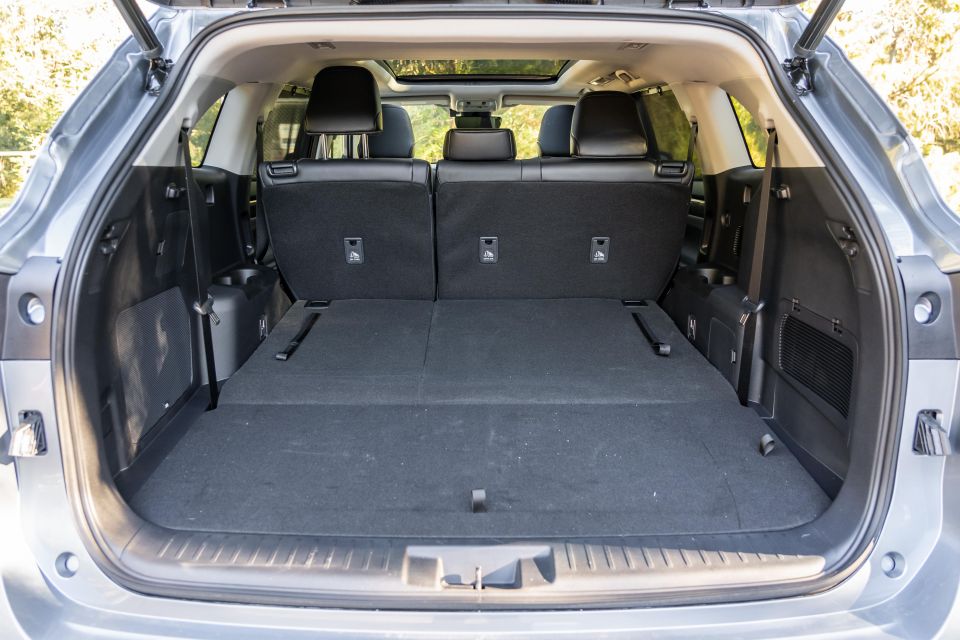
Rearmost occupants do get their own air vents and cup holders, and Toyota says the airbags go all the way back in a side impact.
The boot is accessed by an electric tailgate with a button and kick sensor.
Even with all seven seats in use there’s a decent amount of storage behind (241 litres to the window line), sufficient for a check-in hard shell suitcase and backpack as our video shows.
This expands to 552 litres with the third row seats folded and 1150 litres with just the front-most seats deployed. There’s also a storage area for the removable cargo blind below the cargo floor.

The Kluger Hybrid combines a high-compression 2.5-litre four-cylinder petrol engine with (dual) front and (single) rear electric motors, and a nickel-metal hydride battery to store captured brake energy.
That’s what Toyota means by “self-charging hybrid”: the front motor-generator captures energy that would otherwise be lost to the ether.
The transmission is an electronic continuously variable transmission (e-CVT).
Toyota claims overall system peak power of 184kW, and does not give peak torque figures. The petrol engine makes 242Nm, the electric motors 270Nm (front) and 121Nm (rear), but they never operate at capacity concurrently.

The real story is fuel consumption, which is a claimed 5.6 litres every 100km on the ADR cycle, and CO2 emissions of 128g per kilometre.
By contrast the 218kW petrol V6 Kluger with AWD uses 8.9L/100km and emits 208g/km.
However this 60 per cent fuel economy improvement is counteracted by the hybrid’s $2500 cost premium and the fact it runs on premium 95RON fuel.
The big fuel economy gains are found if you do a lot of stop/start city driving, and it’s these buyers for whom the extra outlay is a no-brainer.
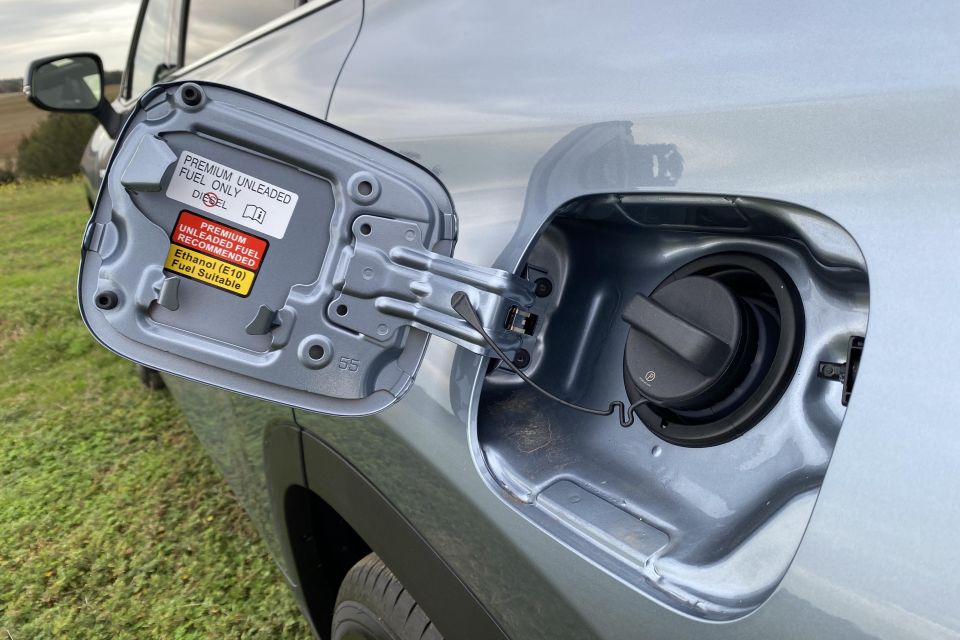
The Kluger Hybrid’s urban-cycle economy is 6.0L/100km compared to 11.9L/100km for the V6, because that’s where the electric motors do the most heavy lifting.
If you do mostly highway driving, the petrol V6’s economy comes back to 8.9L/100km.
In terms of acceleration, Toyota claims a 7.8 second best effort for the V6 AWD versus 8.4 seconds for the hybrid. I managed 9.0 seconds on my attempts in the latter.
The new Kluger quotes a maximum 2000kg braked towing capacity, up 500kg on the smaller RAV4 hybrid.
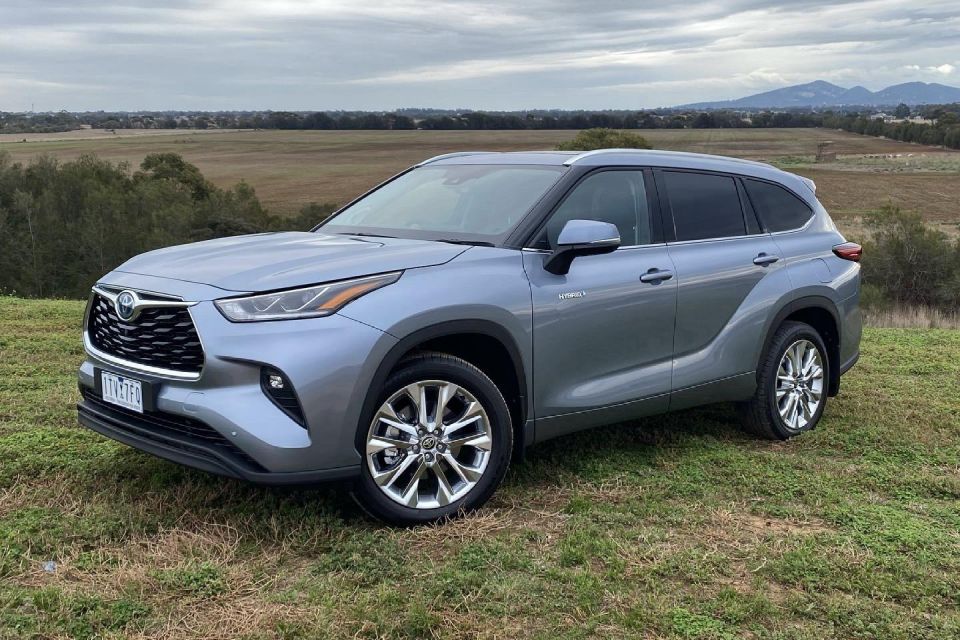
CarExpert helps new car buyers save thousands with expert reviews, honest advice, and transparent pricing – no dealer pressure and no sales games.
You know you’re in a hybrid because the start button is pale blue. Upon pressing it very little happens, because it’s completely silent off the line as the electric motors do the heavy lifting.
Thus the petrol engine’s load is reduced at the most energy intensive moments, which means it burns less fuel to do its work.
It stays this way below 40km/h so long as there’s battery charge, and you can then coast in EV mode down hills or when you lift off the throttle, further enhancing refinement and saving petrol. In stop/start driving it’s preternaturally refined, much more so than a similarly frugal diesel.
My fuel use was just 6.3 litres per 100km, which is outstanding for such a huge vehicle weighing over 2.0 tonnes.
The front and rear motors give the Kluger Hybrid all-wheel drive without a driveshaft. Toyota says the car can put 100 per cent of its might to the front wheels and up to 80 per cent to the rear.
There are various drive modes (Normal, Eco, Sport and Trail) that change things like drive-force distribution and throttle mapping, plus an EV mode operational at car park speeds for a mile or so here and there.
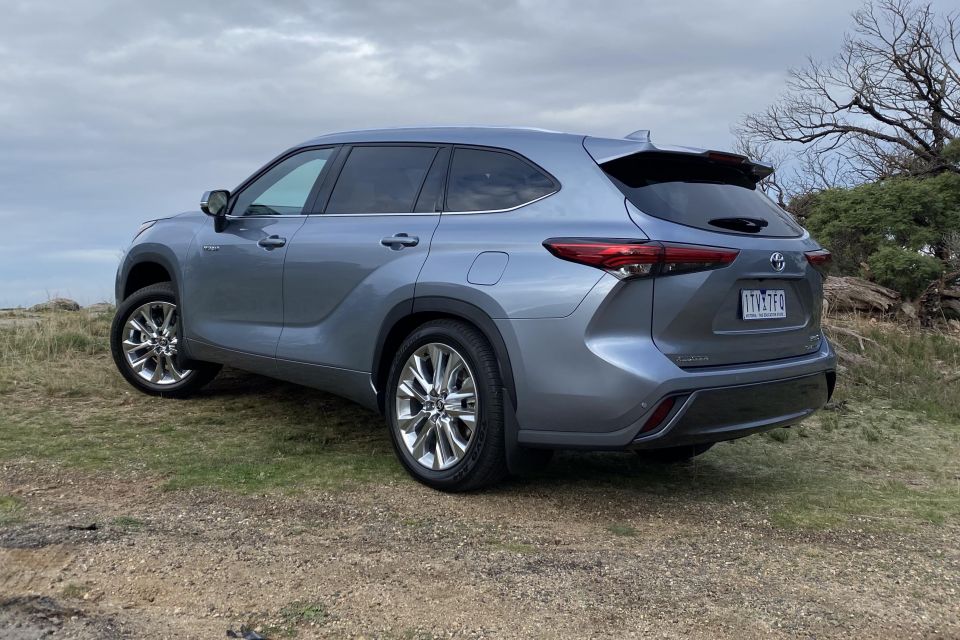
The integration of the front drive motor, torque-smoothing front motor-generator, and rear drive motor with the belt-less motor-controlled e-CVT and engine into a smooth holistic system is impressive. Toyota has been doing this tech for decades now.
Even if you mash the accelerator the engine stays respectably quiet and refined, with no flaring or vibrations, though it doesn’t feel quite as sprightly off the mark as the lighter RAV4.
The one glitch is the speed at which the rear motor kicks in, with some torque steer (steering wheel tugging as the wheels fight for traction) evident on hard take-offs.
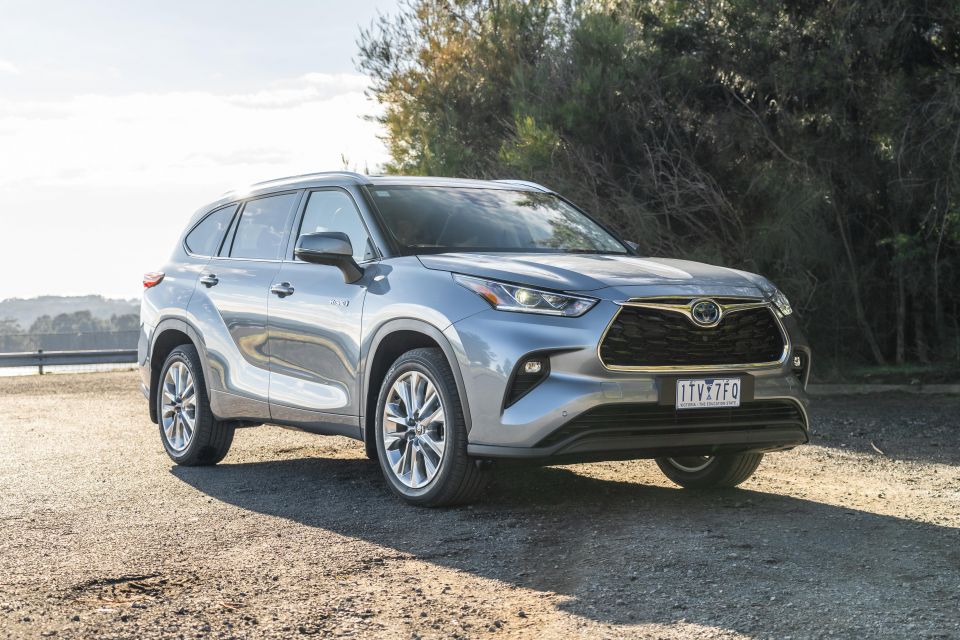
With no mechanical linkage it should all interact a little more rapidly, especially on slippery surfaces where some proactive tyre management might be called for.
Dynamically this new TNGA-based Kluger is an improvement, with a stiffer chassis and better body control against lateral forces (less so over high-speed undulating surfaces).
The steering is light, and the primary ride quality is compliant and cushy, though it does get a little lumpy and jarring over expansion joints etc. due to the slim-sidewall tyres.
The active safety systems work pretty well, especially the lane-centring assist and adaptive cruise control. While outboard visibility is quite good, the blind-spot monitoring system works well also.
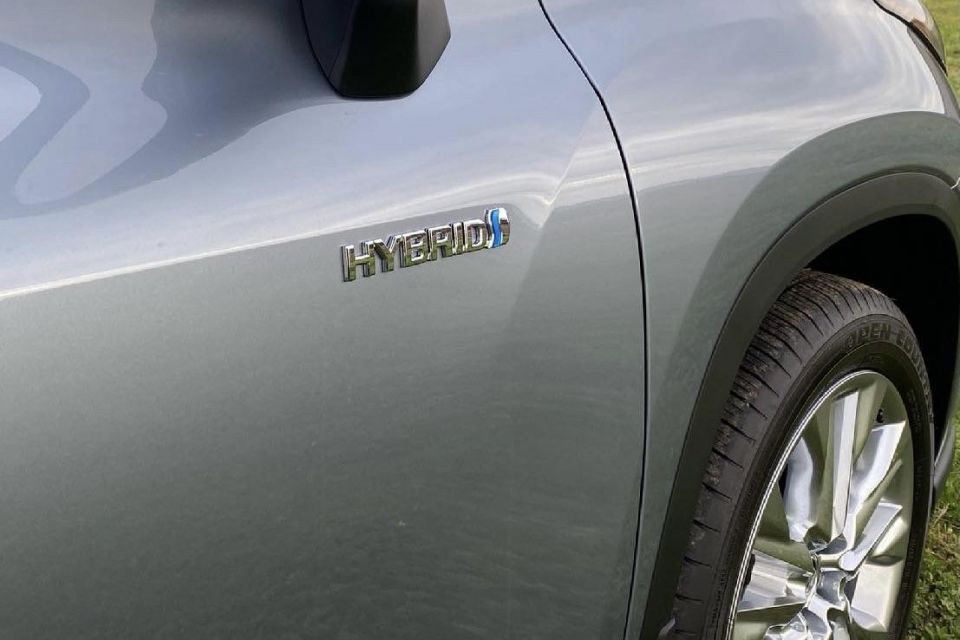
The 2021 Toyota Kluger is covered by a five-year, unlimited-kilometre warranty, with the engine and driveline covered for seven, and the battery for up to 10 years.
Each of the first five services (at 12-month or 15,000km intervals) cost just $250 regardless of engine choice, which is very affordable compared to competitors. Toyota also has the largest dealer network of any brand.
Fuel savings are variable. But let’s take the combined-cycle figures of 5.6L/100km for the hybrid and 8.9L/100km for V6.
The average Australia drives about 300km per week, equal to a fuel saving of just under 10 litres per week. At $1.50 a litre that’s $15 per week or $780 per year, but don’t forget the hybrid needs slightly pricer premium fuel. For those prioritising urban driving routes the savings will be much larger.
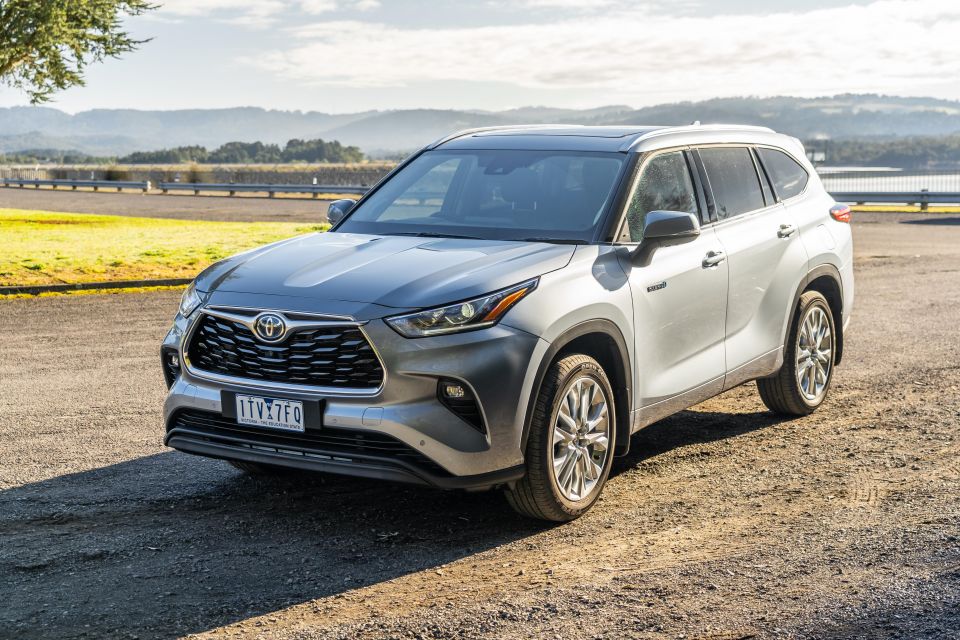
The new Kluger is most certainly a big upgrade on its predecessor model, offering a more contemporary interior, sharper driving dynamics, and newfound urban fuel efficiency/reduced emissions. It’s a big, honest and well-made family SUV.
The hybrid really comes into its own around town. If you regularly drive highways then you might be better looking to the punchier V6, or potentially a rival SUV with a diesel engine which is likely to be just as efficient (albeit less refined) at a constant high speed.
Downsides? While the fuel bills and service costs are low, the starting price for this Grande variant seems high. The infotainment system also falls short of the mark, and the 20-inch wheels with low-profile tyres don’t always offer the smoothest ride quality.
For the typical school-run buyer, the new Kluger Hybrid makes a world of sense, perhaps even more in mid-range GXL form if you don’t mind losing a few luxuries in return for a far more competitive price.
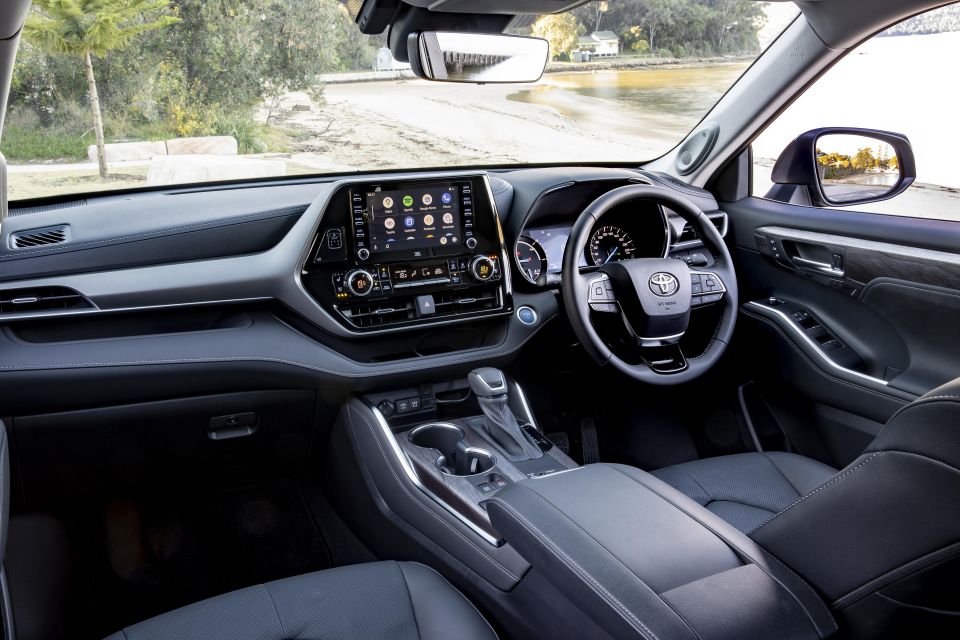
Click the images for the full gallery
CarExpert helps new car buyers save thousands with expert reviews, honest advice, and transparent pricing – no dealer pressure and no sales games.


James Wong
2 Months Ago
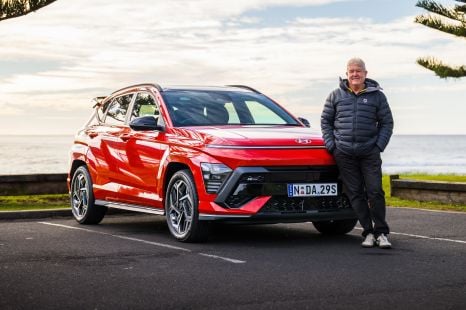

Anthony Crawford
1 Month Ago
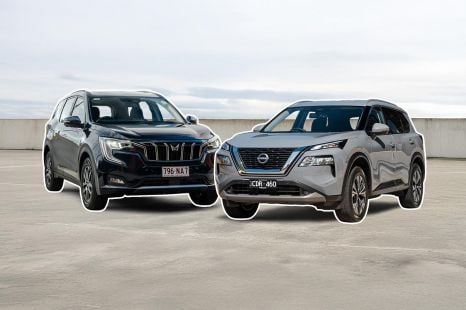

Andrew Maclean
1 Month Ago
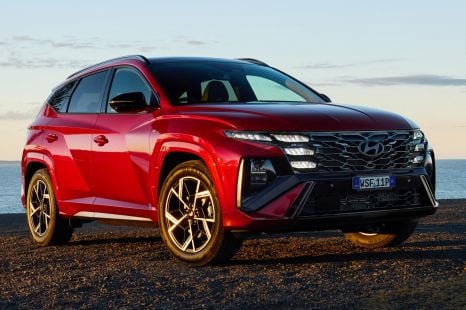

James Wong
1 Month Ago
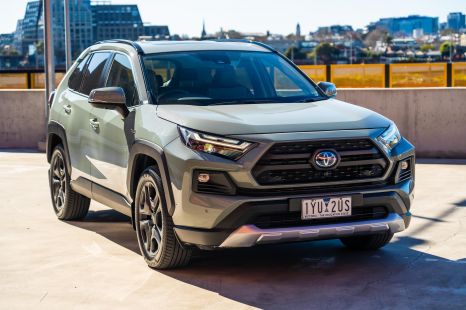

Marton Pettendy
19 Days Ago
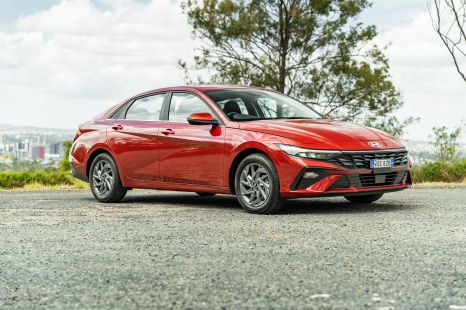

Marton Pettendy
18 Days Ago